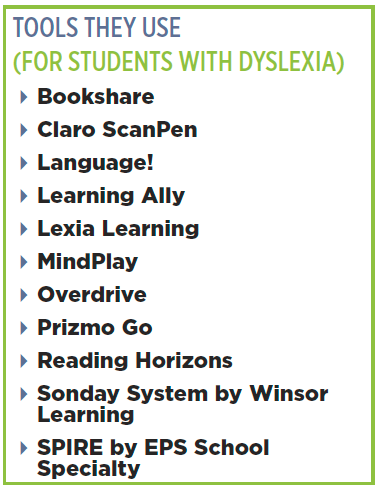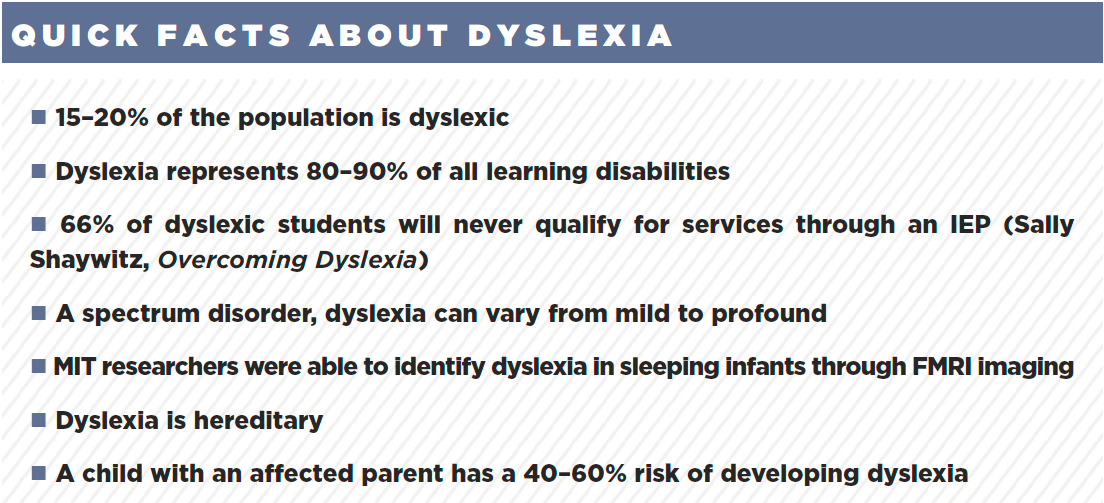A FAMILY OF DYSLEXICS TRANSFORM ED THROUGH STRUCTURED LITERACY AND ASSISTIVE TECHNOLOGY

It wasn’t until Eric Price, assistant principal at West Jordan Middle School in Utah, realized his daughter had dyslexia that he identified dyslexia as the cause of his own struggles. His wife Jennifer, currently the vice president of Decoding Dyslexia Utah, benefitted as a child from her mother’s perseverance to get her tested. “In the 1980s everyone was hesitant to give her a ‘label’ or use the ‘D’ word, but they found a tutor that used structured literacy intervention,” Price says. She excelled in high school and graduated from college early. As parents, the Prices spent many tearful, frustrating nights with their oldest daughter’s spelling and reading

homework. After pushing for testing, they found that “she’s gifted and talented and dyslexic—and neither had been caught because they masked each other.” Now in seventh grade, she sees a structured literacy tutor weekly, is taking all honors classes, and is getting straight As with appropriate accommodations (mostly technology). Their second daughter’s double deficit dyslexia is more severe. But with assistive technology that enables her to complete her work independently, she’s finally happy to go to school and is making progress with a structured literacy tutor. Their third child, currently in kindergarten, started the year at high risk for reading failure. Thanks to blended learning for structured literacy intervention, he’s now at or about benchmark in every area.
TECHNOLOGY LEVELS THE PLAYING FIELD
The parent-founded group Decoding Dyslexia aims to raise awareness, empower families, and

inform policy-makers on best practices to support students with dyslexia. Early structured literacy intervention, most of which is based on the Orton-Gillingham approach, is essential, Price says. Since this intervention is extremely labor and time-intensive, blended learning can offer students more support. Lexia Learning, SPIRE, and Reading Horizons are all on the cutting edge, Price says, providing online structured literacy curriculum that is bringing improved outcomes for elementary students, and Reading Horizons offers options for upper grades as well. Price also recommends Language! and MindPlay for use with older students.
“Audiobooks have been life-changing for our kids,” says Price. Through Learning Ally, Bookshare, and Overdrive, there is so much content to “ear read.” Price is also catching up through audiobooks with “those books I was never able to understand in the past.” He loves sharing his story with students so they know they’re not alone and can achieve their dreams. Assistive technology helps to level the playing field for many struggling students. Speech-to-text technology enables students to write down their amazing ideas. Apps like Claro ScanPen and Prizmo GO take pictures of text and read it back. “There has never been a better time in history to live if you struggle with dyslexia,” Price says. He urges teachers to use these tools. “Many kids need this technology just as much as a student who needs glasses. They do not have a learning problem, they have a reading problem, and they need to learn to read in a different way than their peers.”

Tools and ideas to transform education. Sign up below.
